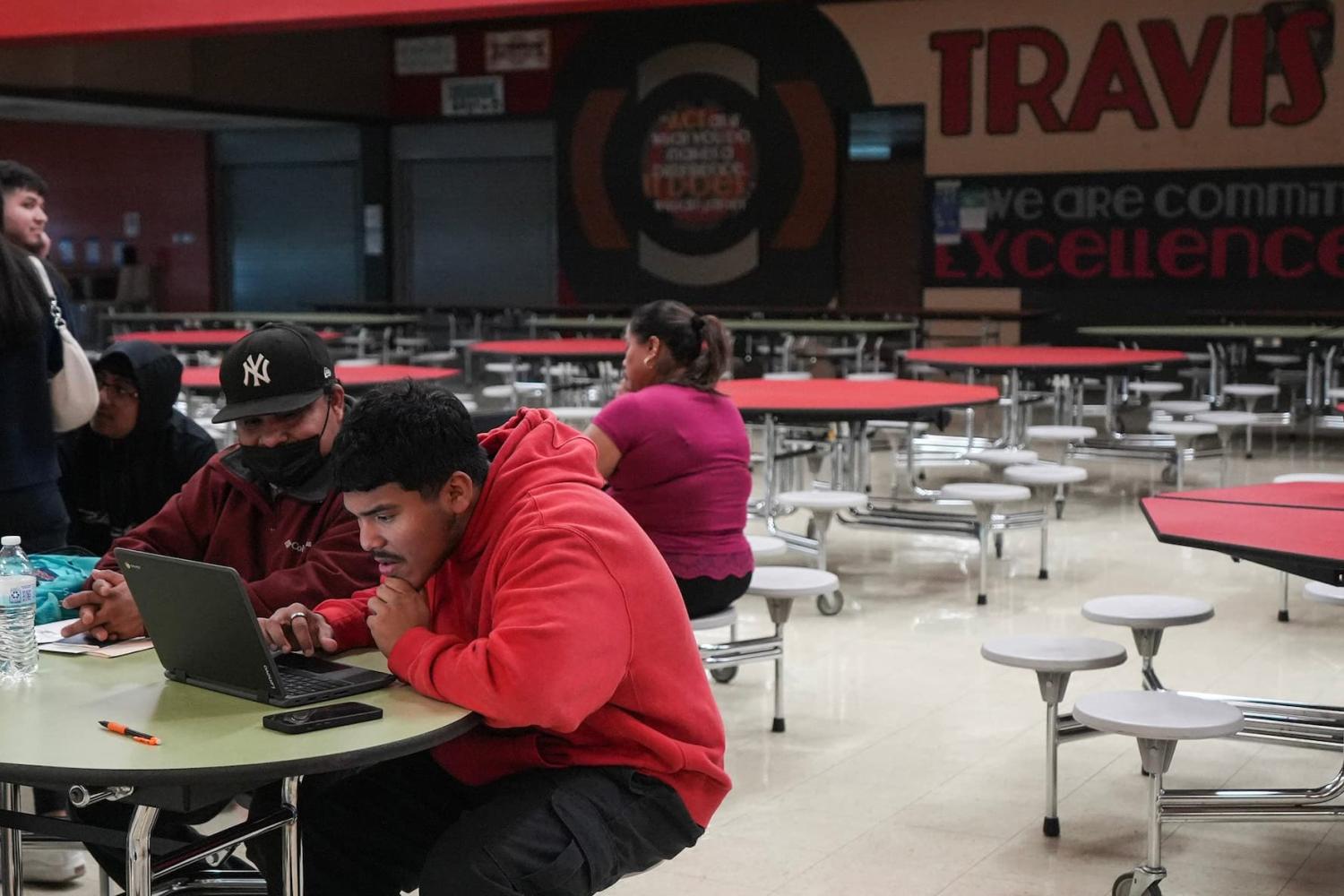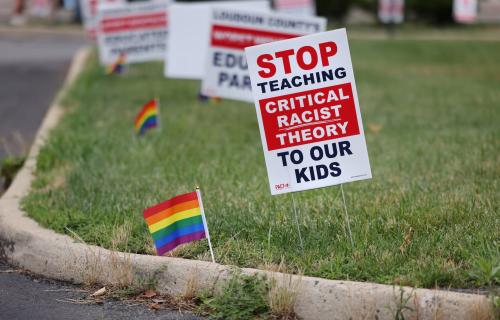Colleges typically ask incoming students to send in their commitment deposit by May 1 for the subsequent fall term. Former First Lady Michelle Obama popularized celebrating May 1 as “College Signing Day” during her years in the White House, and it’s usually joyfully marked with school assemblies, students wearing their college sweatshirts to school, and university social media posts welcoming the next cohort of students.
College Signing Day 2024 looks very different from years past. This year, the implementation of a new Free Application for Federal Student Aid (FAFSA) has been fraught with challenges, delaying when students could apply for aid and when colleges could send students aid packages. Students cannot be expected to decide whether or where to enroll in college without understanding how much it will cost to attend. As a result, hundreds of colleges pushed back their official decision date past May 1.
As the class of 2024 reaches the end of their senior year, what do we know about the impact of this spring’s FAFSA implementation and implications for these students’ college enrollment?
Where did the FAFSA rollout go wrong?
When Congress passed the 2020 FAFSA Simplification Act, college access professionals celebrated. After decades of advocacy, the federal government was going to simplify what has historically been a long, overly complicated form that posed a significant barrier to students’ attending college. The changes included cutting down the number of questions from 108 to about 36, requiring automated transfer of tax data from the IRS to ensure accuracy of information, and adjusting the aid calculations so more students were eligible for the Pell grant. This has been the most significant overhaul of the federal aid application process since its inception.
In June 2023, the Government Accountability Office (GAO) sent a report to Congress entitled “Federal Student Aid Modernization Project Should Better Estimate Cost and Schedule.” The report critiqued the Federal Student Aid (FSA) office’s project budget and schedule, warning that “the project is at risk of cost increases and schedule delays.” GAO was right. The rollout of the 2024-25 FAFSA has been plagued by schedule delays, prompting congressional hearings and further GAO review investigating where the process went wrong. These ongoing investigations will uncover the case study of how the implementation of the FAFSA Simplification Act went so far off course, but for now, attention remains on how to guide students through the FAFSA this year to maximize their financial aid and college access.
How has the 2024-25 FAFSA rollout impacted FAFSA filing?
The best source of data on weekly high school FAFSA filing rates is the National College Attainment Network (NCAN) FAFSA Data Tracker.1 There have been three major shifts in early April that could impact FAFSA filing. First, there was a coordinated “FAFSA Week of Action” April 15 to April 19, with expanded outreach efforts on filings. Second, many states and colleges have grant aid priority filing deadlines on April 15, and typically FAFSA filings see a boost ahead of these deadlines. Third, as of April 15, students can finally log on to their account to make corrections to the form (e.g., adding a missing signature or answering a question they previously left blank).
I am cautiously encouraged by the data. Over the last two weeks, class of 2024 FAFSA completions went up from 29% to almost 36%. FAFSA completions don’t usually change that much toward the end of April. As Figure 1 shows, in 2023, FAFSA completions only went up about three percentage points over April. This year, completions increased by almost nine percentage points. The combination of pressing deadlines and a full court press on supporting students seemingly succeeded at bumping up FAFSA filing.
Despite that encouraging news, Figure 1 also shows high school FAFSA completions are dramatically down compared with last year. As of April 26, 2023, 48.2% of high school seniors had completed the FAFSA—this year it’s 35.6%. That’s about 477,000 fewer FAFSAs, a 24% year-over-year decline in submissions. This is an unprecedented drop. To come even close to reaching 2023 filing levels, there would have to be multiple weeks posting three to four percentage point increases through the end of this spring. The past few weeks of data suggest that’s possible, thanks to the tireless efforts of high school counselors, college access nonprofits, and state departments of education.
The national completion rates mask substantial variation across and within states. Declining FAFSA completions are a problem in every state. So far this year, state completion estimates range from about 18% in Alaska to almost 46% in Tennessee. All states have completion rates below 2023 levels, but Indiana is only down eight percent while Alabama has seen a 32% drop in FAFSA completions. There are also troubling gaps in FAFSA completion by income. Looking at the share of students eligible for free and reduced-price lunch as an income proxy, NCAN estimates almost 41% of seniors in comparatively higher-income high schools have completed the FAFSA, compared with only 33% of students in lower-income high schools. This is especially discouraging considering that the lowest-income students would benefit the most from filing the FAFSA and accessing federal aid.
What we don’t know is the impact of the FAFSA rollout on returning college students’ FAFSA filing—because FSA does not release college filing reports like they do for high schools. Reporting these data in future years should be a transparency priority for FSA. Having the high school data this year enabled policy researchers and college access practitioners to understand early on the magnitude of the rollout’s impact on filing, and to target resources accordingly.
What financial aid will students miss out on if they don’t file the FAFSA?
The FAFSA is the gateway form to accessing federal aid. It’s also commonly used by states and institutions to award their need-based (and, in some states, even merit-based) aid. As Figure 2 illustrates, about 35% of college students receive federal grants, 31% receive state grant aid, and 49% receive an institutional grant.
Most low-income students receive federal grant aid—81% of students whose families earn less than $20,000 a year. Intuitively, the share of students receiving federal grant aid, which is need based, declines with increasing family income. State grants are a mix of need-based and merit-based aid. The decline in state aid as income increases is less steep but still a negative slope, with about 47% of the lowest-income students receiving state grants compared to 13% of the highest-income students.
However, institutional aid does not decline with income. The highest- and lowest-income students are equally likely to receive institutional aid (and conditional on receiving aid, high-income students receive larger awards). Institutional aid is often leveraged to optimize enrollment, increasingly drawing on algorithms to award just enough aid to entice students, particularly out-of-state applicants, to enroll and bring in additional tuition revenue. Without completing the FAFSA, students cannot receive federal financial aid, leaving millions of dollars on the table, and posing a greater burden on states and individual colleges to support college affordability.
How can states and institutions award aid without the FAFSA?
States and colleges are developing creative strategies to calculate aid without the FAFSA. Some institutions are using the CSS Profile instead (though that form is mostly used at highly selective private and state flagships). Some colleges have created their own institution-specific forms (though interim forms may discourage students from subsequently filing the FAFSA and accessing federal aid if they think the institutional form is all they need to complete). In West Virginia, Governor Justice just declared a state of emergency, authorizing the state to use students’ FAFSA from last year to automatically extend the state Promise scholarship for returning students and to use a state application to award the scholarship to new students. In general, looking at last year’s FAFSA will give most states and colleges enough information to progressively disburse grant aid for returning students.
While these creative efforts are important, states and institutions have scarce dollars to allocate. Their funding models historically assume that students will have access to federal dollars as well, often paying relatively little to the lowest-income students who have most of their tuition and fees covered by the Pell grant. Colleges and states should clearly prioritize the lowest-income students when awarding their aid. But covering a larger share of the lowest-income students’ costs with state dollars means fewer dollars available to support students slightly higher in the income distribution (who may still face substantial resource constraints paying for college). States and colleges cannot fully cover the decline in federal aid from fewer students being able to complete the FAFSA.
Colleges bracing for large enrollment declines
If students can’t afford college, they’re unlikely to enroll. It’s difficult to estimate just how much fall 2024 enrollment will decline because of the FAFSA rollout, though the COVID-19 pandemic is the most recent “shock” to higher education that could offer an insight into the potential effect of low FAFSA filing on enrollment. In the fall of 2020, undergraduate enrollment overall (counting incoming and returning students) declined 3.3%, and community college enrollment declined about 8.7%. There was a 10% decrease in first-time, undergraduate enrollment. FAFSA filing did decline in the spring of 2020, one of the earliest signs that college enrollment might decline. In California, for example, high school seniors’ FAFSA completions declined about 14% and California’s undergraduate enrollment declined by about four percent overall and 11% at community colleges. Given the current state of FAFSA filing, it’s possible the decline in enrollment in fall 2024 comes close to pandemic-driven declines, particularly at community colleges.
During the pandemic, an influx of federal aid offset lost tuition revenue from declining enrollment. Congress can, and should, consider a similar pot of emergency funds for institutions to use to support low-income student enrollment and persistence. As the end of the school year approaches and high school staff contracts end, states could also use financial support that would enable them to hire school counselors over the summer to continue outreach and support efforts.
The impact of the FAFSA rollout is clear. Fewer students will enroll in college in the fall of 2024. Just how many fewer remains to be seen, and there are still several weeks between now and when classes start in the fall to help students complete the FAFSA and access federal grants to pay for college. There are many proven strategies to reach students and families and boost FAFSA filing, and college access professionals are working around the clock to deploy those strategies. Early data suggests those efforts are working, but we’ll need to continue treating every week until the end of the school year as if it’s a “FAFSA Week of Action” to minimize the enrollment decline this fall.
-
Footnotes
- The Department of Education recently put out their own estimate of high school FAFSA filing through April 19, estimating slightly higher FAFSA filing rates than NCAN. The difference is likely attributable to different assumptions about 12th grade enrollment, but the patterns hold that substantially fewer high school seniors have completed the FAFSA this year relative to last year, and the variation across states is tremendous.







